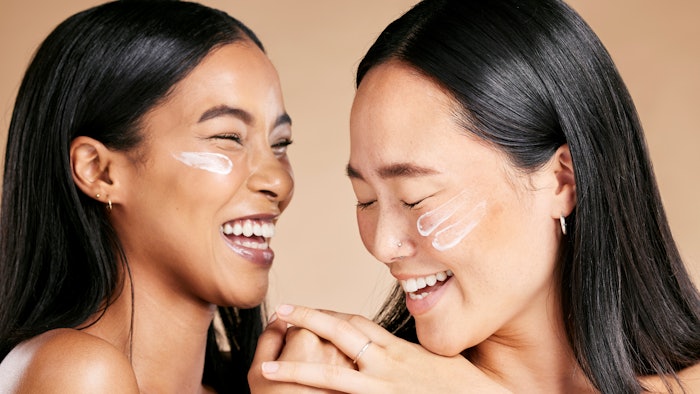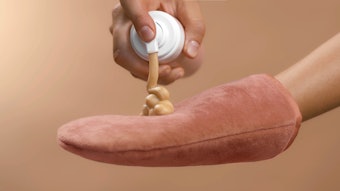
Gone are the days of lounging for hours slathered in body oil; the modern skin care consumer is more serious about sun protection and is becoming better informed about the necessity of sunscreen. Makeup brands often include sunscreen in foundations and BB creams, providing consumers with lightweight, constant coverage. Tinted moisturizers with SPF can be found at a range of price points, encouraging even young consumers to apply sunscreen daily.
These savvy consumers pay attention to ingredients, and younger generations are scrolling through TikTok for makeup recommendations and reading reviews before they buy. While these knowledgeable consumers make great customers, they also hold brands to an incredibly high standard — and as a professional in the beauty industry, you must keep up.
What Are Clients Looking for in Sun Care Products?
According to a Future Market Insights report, the sun care market is projected to experience a compound annual growth rate of 6.4% over the next 10 years. Many factors will contribute to its growth. As stated by that same report, consumers have become more aware of the damaging effects of UV rays, such as certain skin conditions and sun-related illnesses. Because of this increased awareness, consumers are prioritizing sun care now more than ever.
Aside from the fear of skin cancer, rash, and infection, many consumers have started paying more attention to ingredients and are more interested in how certain products affect their skin directly. Benefits from SPF and UV protection can combat aging, enhance moisturization, and visibly change the appearance of the skin.
Lastly, consumers are more concerned with sustainable packaging. A joint study done by McKinsey & Co. and NeilsenIQ revealed a “clear and material link between ESG-related claims and consumer spending.” You can see this insight moving into the beauty industry with brands prioritizing sustainable packaging. One survey shows that 66% of U.S. consumers and 80% of U.S. adults ages 18 to 34 are willing to pay more for sustainable products.
Related: UV Booster Market to Boom as Interest in SPF Protection Peaks
How You Can Stand Out as a Beauty Brand in the Sun Care Space
So, now that you know about your clients' sun care preferences, how can you show up as a leader in the industry? Here are three strategies to get started.
1. Invest in Safe Ingredients and Know Which Ones to Watch Out For
Today’s consumers are more educated and likely to check ingredient labels when shopping. By utilizing high-quality, safe, and effective ingredients for all sun care products, you are simultaneously protecting yourself and building a foundation of trust with your clients. Zinc oxide and titanium dioxide are two ingredients that are well-established in the skin care industry; they have Food and Drug Administration approval, and are known to be safe and effective for all ages. These ingredients actually deflect sun rays off the skin. In contrast, chemical sunscreens absorb the sun’s rays into the skin as heat with ingredients like oxybenzone, avobenzone, octisalate, octocrylene, homosalate, and octinoxate — which are still pending FDA research.
Other ingredients to consider in your sun care products include niacinamide, centella asiatica, and both prebiotics and probiotics. While these ingredients do not actively deflect sun rays, they can be great additions to sun care products, as more consumers look for products that can protect them from sun damage and provide other benefits. Niacinamide is a topical form of vitamin B3 that minimizes acne and skin tone. Centella asiatica is an antioxidant that helps hold moisture in the skin’s barrier, and prebiotics and probiotics can balance the skin biome and reduce inflammation.
2. Educate Your Consumers
One thing we all know too well is that social media can get loud. With all the influencers, promotional content, and mixed messaging, it can be hard to discern what is actually true. While your clients are likely coming to you with some knowledge, not all of it may be accurate.
This is where you come in. Show them you are an expert in your field by acknowledging what they know and gently correcting what they don’t. Know which products you offer are sustainable and why. Know which ingredients are FDA-approved and which aren’t. Most importantly, know what benefits your ingredients provide. Your consumers will appreciate any additional education you offer.
Related: Busting SPF Myths
3. Work With Your Manufacturer to Pick the Right Products
The relationship between beauty brands and their chosen manufacturer is a partnership — two separate halves creating a product they can be proud of. Look for a manufacturer with systems in place to ensure all regulations and standards are met. You want a partner that follows strict quality control procedures, so you can be sure that the products you’re selling are safe.
Knowing your customers and products is a great way to get ahead in the beauty industry. With more and more people reviewing products, and more and more avenues to read and watch reviews, beauty brands must keep up. By prioritizing safe ingredients and FDA recommendations, working with a trusted manufacturer, and using your knowledge to educate, you’ll be an unstoppable force in the beauty industry. Why not start with sun care?
Odalys Gonzalez is the vice president of research development at Cosmetic Solutions, a specialized private-label skincare manufacturer that provides contract manufacturing, filling, formulation, packaging, and graphic support for brands around the world.










